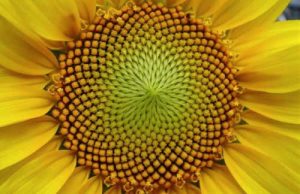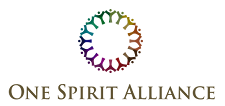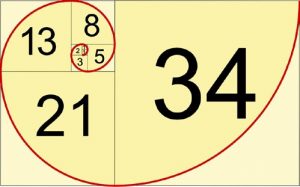A Medical and Science Seminar with Peter Heusser and others, 8th-9th June 2018, University of Westminster.
Review by Simon Charter M Ed, joint co-ordinator of the Natural Science Section of the UK Anthroposophical Society
This event was a triumph of straight forward logical thinking and common sense in the face of a issue which can so easily fall into a discussion around beliefs and the sharing of opaque thinking relating to experiences which not everyone can participate in. It was also delivered in a wonderfully unpresumptuous and accessible way.
A scientific basis for spiritual research
Peter started with a brief look at the way we gain knowledge, ie the epistemology used in science. Most of us accept that knowledge involves the relating of our ideas (concepts) to the experienced world (percepts). Kant established this and Rudolf Steiner strove for greater clarity around this in his early written works. How does our activity of thinking meet our activity of observing? Steiner however did not limit himself to the outer world but extended observation to our inner life as well. For many modern philosophers though, this is a problem: percepts become subjective as sense impressions are conditioned by our sense organs and concepts become subjective as they are thought to be products of our brain activity.
 We cannot argue against this theoretically but empirically we can experience the objectivity, or universality of both percept and concept. We did this together by observing a picture of the centre of a sunflower: we could all see the pattern, its lawfulness in the percept. We also followed the creation of the Fibonacci progression of numbers, which was done on the board without us knowing what was being done, sooner or later we could all see lawfulness and could continue it independently if we wanted to. Peter showed us how this was inherent in the spirals of the sunflower.
We cannot argue against this theoretically but empirically we can experience the objectivity, or universality of both percept and concept. We did this together by observing a picture of the centre of a sunflower: we could all see the pattern, its lawfulness in the percept. We also followed the creation of the Fibonacci progression of numbers, which was done on the board without us knowing what was being done, sooner or later we could all see lawfulness and could continue it independently if we wanted to. Peter showed us how this was inherent in the spirals of the sunflower.
“…is not all science working with the spirit even if it is not named as such? If the laws, the principles are there in our world, might these as thoughts be the spiritual agents active in the world?”
Peter asked the following question: is not all science working with the spirit even if it is not named as such? If the laws, the principles are there in our world, might these as thoughts be the spiritual agents active in the world. The laws are seen as properties rather than agents though and in modern science we often seek in vain to find the causes of these things in the material parts in some way.
Honest observation and consideration shows that nowhere are the properties of a higher level of creation found in a lower level: The properties of sodium and chlorine do not predict the properties of common salt, the properties of hydrogen and oxygen do not predict those of water. Moreover, the chemicals of life do not predict the way cells are formed. Likewise, at higher levels of organisation: from cells to tissues, tissues to organs, organs to organism, single organism to flocks and herds or species, and species to ecologies.
“…organisation can be found from above down but never from below up. The parts do not dictate all the properties of the whole… Reductionism is seen more and more as a false doctrine.”
The properties at any given level have to be found at that level, and organisation can be found from above down but never from below up. The parts do not dictate all the properties of the whole. But this is the thinking that is strongly embedded in the medical science of today and propagated in the medical thinking. Physics has gone beyond these ideas and “emergence” is now gaining ground as a term used to describe properties arising at higher levels. Reductionism is seen more and more as a false doctrine. Quantum mechanics negates atomism, but physical chemistry and biology has not fully grasped this.
Our challenge in science is to find and grasp the active principles at work in our area of study. The numerical principles (mathematics) are easier to see, but as Goethe showed there are also qualitative principles which can be seen – in physics, chemistry and especially in the realms of life.
One could say that it is not just the material matter that matters.
Genetics
In his second presentation Peter explained the functioning of the information transfer in genetics. What is clear at every stage in the development of an organism is that there are several possible processes that may occur – for instance in the splicing of RNA, in protein activity, in bonding patterns of tertiary structures. How is the choice made? It seems clear that this must be the result of an ordering principle not contained in the parts. If we consider all the options in the bonding process creating a tertiary molecular structure, it is estimated that it would take 1050 years for the organism to find the right one by a random process. So it does appear that we need active structural laws working in the organism.
“If we consider all the options in the bonding process creating a tertiary molecular structure, it is estimated that it would take 1050 years for the organism to find the right one by a random process. So it does appear that we need active structural laws working in the organism.”
We looked at the commonly studied model organism, the fruit fly, Drosophila melanogaster and saw how the larval development requires so many factors to be orchestrated such as varying concentrations of RNA, translation into proteins, reabsorption and degradation. So, what binds the orchestration together and how is it conducted?
Here we discussed the idea of morphogenetic fields which is gaining ground. To my thinking we need a complex of such fields and these must have relationships which have an ordering pattern in time as well. This could then be what Rudolf Steiner calls the etheric body, or body of formative forces.
Overview of relevant medical research
Professor David Martin gave a lively run through much of the research in the realms of integrative medicine which is going on in the continent. This field is much stronger than in the UK and is growing rapidly. Anthroposophical medicine tries to be as inclusive as possible. The testing of many complimentary medical measures needs to include internal and external evidence. There is some interesting work being developed in the assessment and evaluation of single case studies as an alternative to cohort and randomised trials, showing how, given the right circumstances, one can see the individual case can reveal the general benefit of a measure.
David showed, using several published examples, how natural scientific research and spiritual scientific research end up arriving at the same place. A bit like the Gotthard tunnel excavation, which started on opposite sides of the mountain, but met precisely in the middle.
It was also interesting to see how the influence of potentised remedies seems to be stronger at higher organisational levels, i.e. little in cancer cells in vitro, more in animals and yet more in humans. Another significant finding was the value of a good consultation and the first consultation with student doctors with their fresh interest being favoured in 97% of cases.
Brain and consciousness
“There is actually no evidence that the activity of the brain causes consciousness.”
In Peter Heusser’s final contribution he explored the relationship between mental phenomena and brain activity, between psychological events and physiological / neurological activity. He said that in all the research that has been done there is still an explanatory gap. There is actually no evidence that the activity of the brain causes consciousness. There are connections between them, just as one may find connections between the functioning of traffic lights and the flow of traffic but one could not say the activity of the traffic lights causes the traffic flow.
Referring back to our common experience of seeing the principle of the Fibonacci number series and using it mentally. Peter suggested that if the mental activity was the result of our individual physiological make up we would not be able to have the same thoughts and follow the same process as we did. He suggested we had all been able to participate in a universal thinking, and that if this was the case then it can give hope that we can all access universal thoughts, for instance those which can generate world peace.
There is much evidence of thinking activity having a catabolic influence on the brain (breaking down cell structure). Also there is neuroplasticity, i.e. our brains change according to the activity they are used for. London taxi drivers have been seen to develop a different brain physiology to the rest of us. It seems that the neurological activity is the consequence of the thinking rather than the other way round. We can prepare the brain for our conscious activity as one might polish a mirror in order to see better reflections. Meditative activity which increases normal mental work is still destructive but if it gains access to living spirit it does not degrade the brain. It can involve feeling and willing and can non-destructively enhance thinking activity. The denial of spirit will therefore have consequences for people.
Group work
One aspect of the whole event which I felt to be very helpful was to split into small groups to digest the content of the presentations. This involved distilling the significant points, sharing our inner responses and gathering questions raised.
Questions arising in our group; what organises mutation? How do we learn to grasp and trust qualitative lawfulness to the same extent as mathematical lawfulness? What correlation is there between a patient’s consciousness, the idea of a remedy and the doctor’s consciousness?
I found this conference a thoroughly worthwhile event. I felt it showed that there is a straightforward approach to the spiritual entities at work in the world and in us through contemplation of ideas and using our own reflective thinking capacity.
References
Steiner, R. (2011) The Philosophy of Freedom, Rudolf Steiner Press ( first published 1894).
Steiner , R. (1981 ) Truth and Knowledge, Steinerbooks ( first published 1892).
Heusser, Peter (2016) Anthroposophy and Science: An Introduction, Peter Lang AG.

